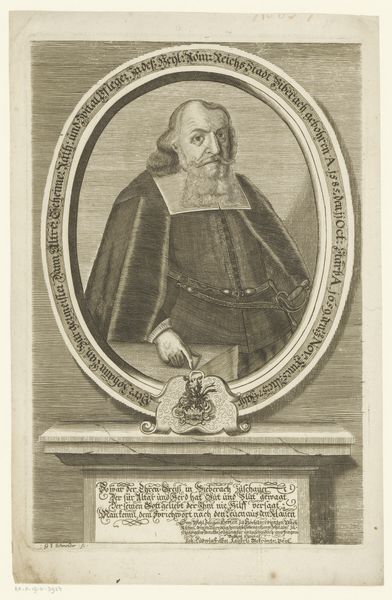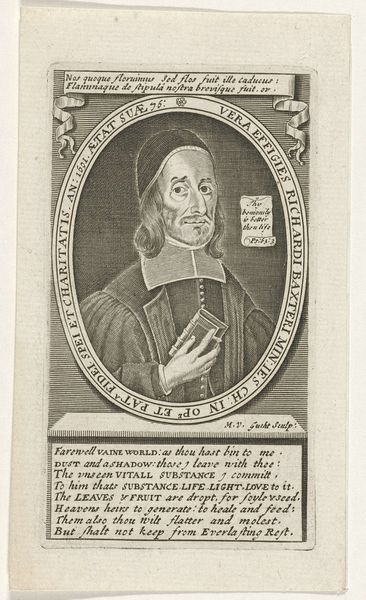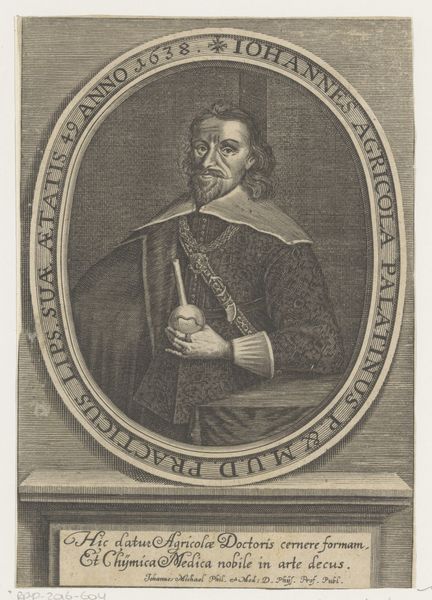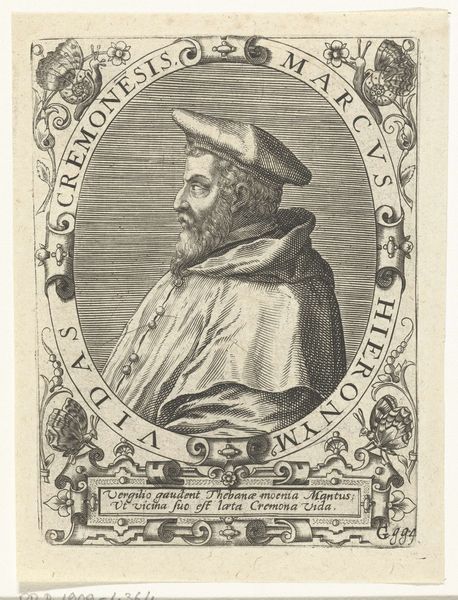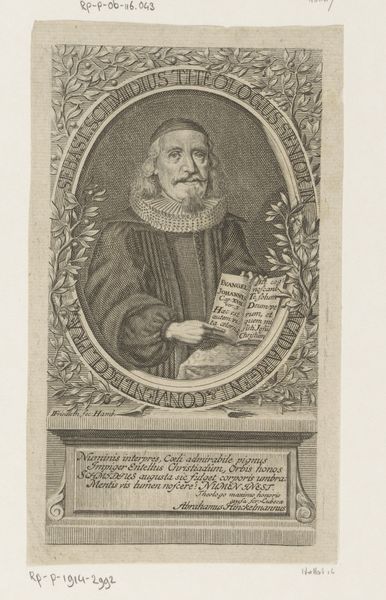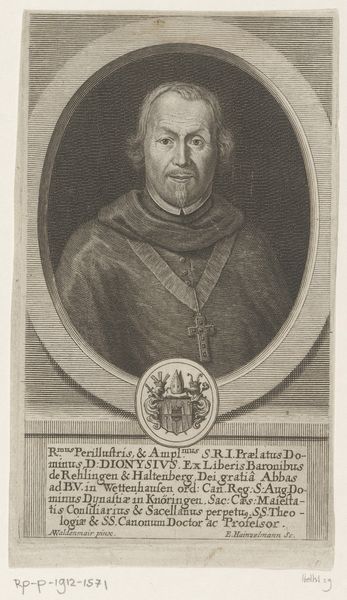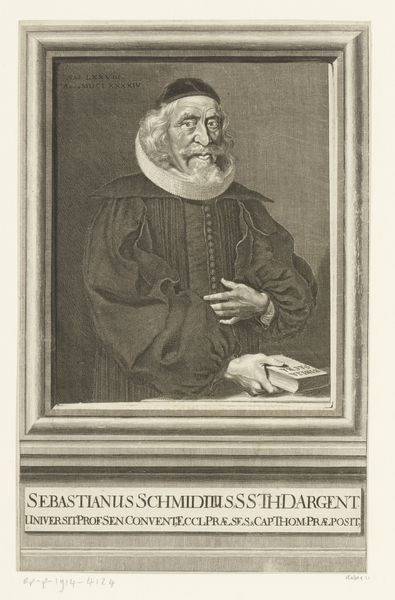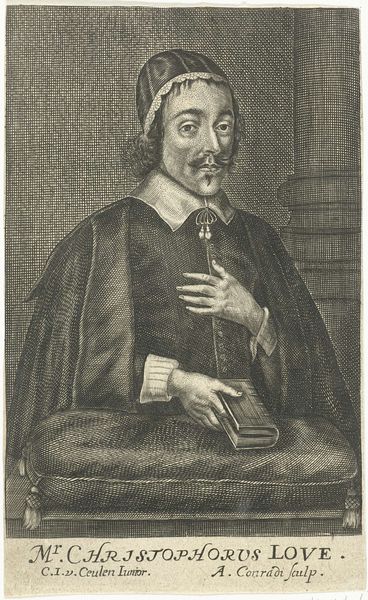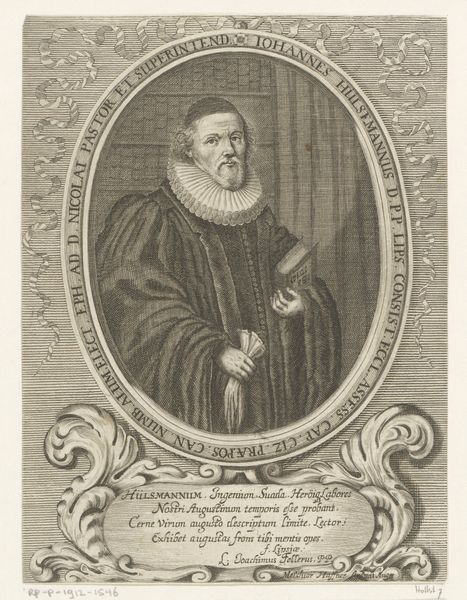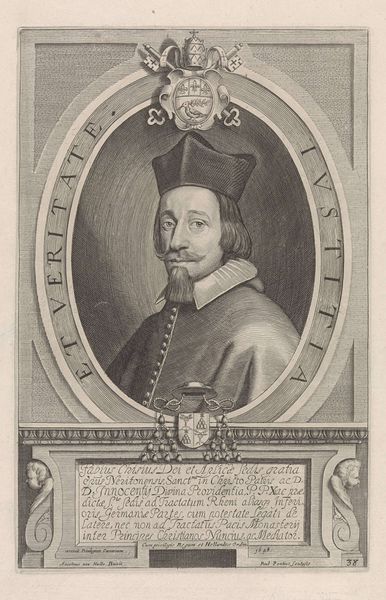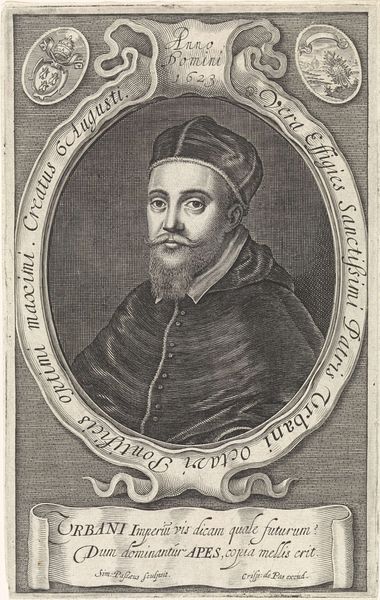
print, engraving
#
portrait
#
baroque
# print
#
book
#
line
#
history-painting
#
engraving
Dimensions: height 142 mm, width 80 mm
Copyright: Rijks Museum: Open Domain
Editor: This is "Portrait of Richard Baxter," an engraving from sometime between 1674 and 1714, presumably by Elias Nessenthaler. It's a very detailed portrait. The sitter looks rather stern. I notice a book in his hand and inscriptions around the oval frame. How do you interpret this work in its historical context? Curator: It's fascinating how portraiture in this period served very specific socio-political purposes. The visual emphasis on Baxter holding the book is central. Consider that prints like these weren’t just aesthetic objects; they were tools. Who was Richard Baxter, and what public role did he play? Editor: I'm not familiar with the name, I am assuming that the book in his hand suggests a writer of some sort. Perhaps it points towards an important religious or intellectual text that he championed? Curator: Exactly. Baxter was a very influential Puritan minister and theologian, advocating reconciliation among different religious factions. The book acts as a signifier of his intellect, faith, and public authority. Disseminating his image through print allows him to become a figure in political and religious discourse even to those who've never heard him preach. The inscription around the image reinforces his persona and perhaps aligns him with religious ideals. Editor: That makes a lot of sense. So, in essence, this print isn't just a likeness, but a carefully constructed message distributed to a wide audience. The print acts as a piece of political propaganda! Curator: Precisely. And understanding its political intentions gives us insights into how religious leaders at that time managed their image and exerted power through public engagement and influence. How do you feel this understanding reshapes your initial reaction to the piece? Editor: It definitely adds depth! Seeing it as more than just a stern portrait but also a political statement makes me appreciate the intention behind the work much more. Thanks for pointing that out!
Comments
No comments
Be the first to comment and join the conversation on the ultimate creative platform.
